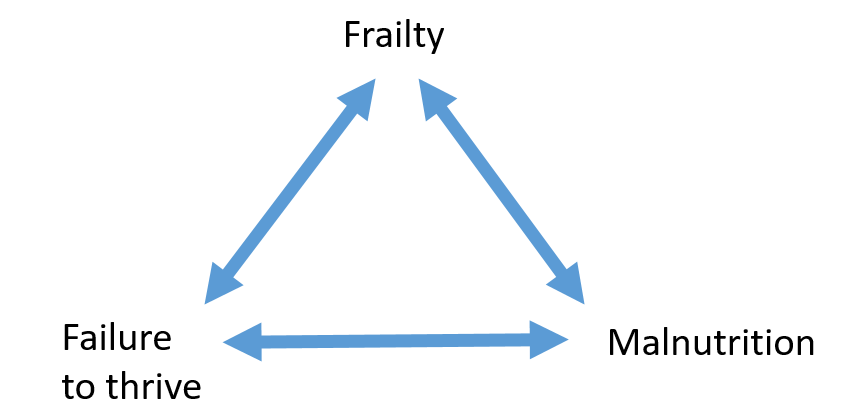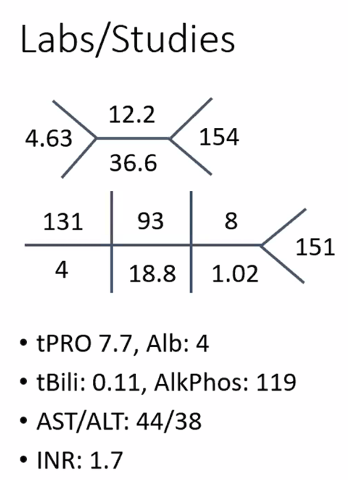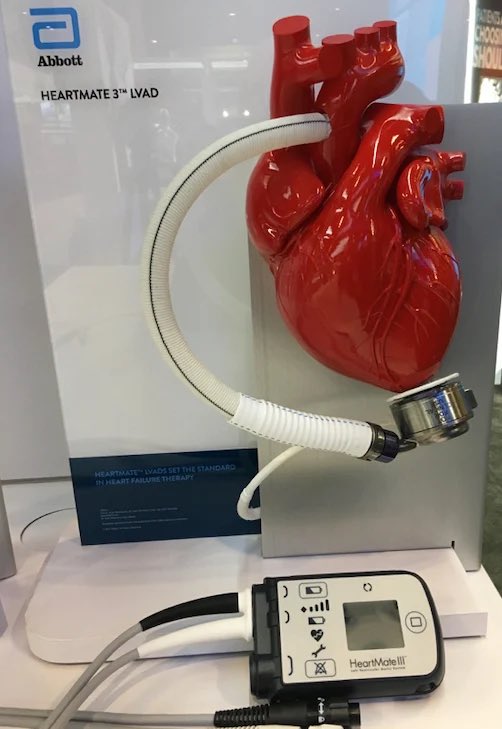Discover and read the best of Twitter Threads about #HospitalMedicine
Most recents (7)
#HospitalMedicine 101
What is difference between "failure to thrive" , "frailty" , and "malnutrition" in adults?
Follow the thread 👇for some🧠food
@BrownJHM
What is difference between "failure to thrive" , "frailty" , and "malnutrition" in adults?
Follow the thread 👇for some🧠food
@BrownJHM

FRAILTY is a loss of physiological reserve (usually from deconditioning, aging, cancer, a prolonged ICU stay, or loss of function after a stroke).
Pre-conditioning, re-conditioning, or assistive devices may optimize some function but most causes are not so easily reversible.
Pre-conditioning, re-conditioning, or assistive devices may optimize some function but most causes are not so easily reversible.
FAILURE TO THRIVE is loss of the ability to maintain independence given current support structures (or lackthereof).
Independence can be restored or optimized by providing more adequate psychosocial, community, or family support.
Independence can be restored or optimized by providing more adequate psychosocial, community, or family support.
‼️ #CriticalCare #Tweetorial ‼️
🫁 Tracheostomy Basics & Trach Emergencies 🫁
Join me on a review tracheostomy tube basics and can't miss emergency situations!
#EmoryNCCTweetorials
#FOAMcc for #CritCare #EmergencyMedicine #HospitalMedicine #MedEd #Neurocrit #PulmCrit
1/🧵
🫁 Tracheostomy Basics & Trach Emergencies 🫁
Join me on a review tracheostomy tube basics and can't miss emergency situations!
#EmoryNCCTweetorials
#FOAMcc for #CritCare #EmergencyMedicine #HospitalMedicine #MedEd #Neurocrit #PulmCrit
1/🧵

Goals for this #Tweetorial
1-Review basics of the tracheostomy tube
2- Review anatomy relevant to tracheostomy placement
3- Safety tips for your inpatients with trachs
4- Review emergency situations relevant to trachs
2/🧵
1-Review basics of the tracheostomy tube
2- Review anatomy relevant to tracheostomy placement
3- Safety tips for your inpatients with trachs
4- Review emergency situations relevant to trachs
2/🧵
Lets start with a case...
60s y/o male with a left basal ganglia ICH 🧠 who is now s/p bedside percutaneous tracheostomy placement 4 days ago. You are called into the room for a high pressure alarm 🚨
What is your first step?
3/🧵
60s y/o male with a left basal ganglia ICH 🧠 who is now s/p bedside percutaneous tracheostomy placement 4 days ago. You are called into the room for a high pressure alarm 🚨
What is your first step?
3/🧵
. @rbganatra and I had pleasure of presenting talk on 2021’s most important papers in #HospitalMedicine @BIDMC_medicine #GenMed #GrandRounds. Here are our (abbreviated) 🔑points.
Anyone wanting to watch the video (with nerdy jokes) can click here:
vimeo.com/699850485
🧵
1/
Anyone wanting to watch the video (with nerdy jokes) can click here:
vimeo.com/699850485
🧵
1/
Article selection: reviewed the major med journals ➕ JWatch Hospital Medicine for articles that were practice-changing or practice-confirming in setting of sparse data.
Covered the following 8 questions:
2/
Covered the following 8 questions:
2/

First, does contrast->CKD/AKI❓ Retrospective cohort w/ regression discontinuity design in all EDs in Alberta 🍁 2013-2018. >150k w/ D-dimer during ED visit (no RRT in prior 6 mos).
1o outcome: long-term renal f’n (eGFR up to 6 mos post index visit).
jamanetwork.com/journals/jamai…
3/
1o outcome: long-term renal f’n (eGFR up to 6 mos post index visit).
jamanetwork.com/journals/jamai…
3/
Another #CriticalCare #Tweetorial!
🫀Left Ventricular Assist Device for the non-cardiologist🫀
Join me on a journey through LVADs with some #FOAMcc highlights useful for #CritCare #EmergencyMedicine #HospitalMedicine #Meded
#EmoryNCCTweetorials
@CardioNerds @emoryheart
1/🧵
🫀Left Ventricular Assist Device for the non-cardiologist🫀
Join me on a journey through LVADs with some #FOAMcc highlights useful for #CritCare #EmergencyMedicine #HospitalMedicine #Meded
#EmoryNCCTweetorials
@CardioNerds @emoryheart
1/🧵

Goals for this #Tweetorial
1-Review the basics of what an LVAD is and does
2-Discuss indications for an LVAD
3-Review some common complications of the device itself
4-Review systemic complications of an LVAD
2/🧵
1-Review the basics of what an LVAD is and does
2-Discuss indications for an LVAD
3-Review some common complications of the device itself
4-Review systemic complications of an LVAD
2/🧵
World class @ClevelandClinic Hospital Medicine Grand Rounds - Update in #HospitalMedicine by Dr. Jessica Donato! A rising star! @BIDMC_IM @HarvardHospMed @CWRUSOM @SocietyHospMed 

Is postop #afib associated w increased risk for CVA/TIA? 





1 Let’s talk #toxicology! Dr. Kelly Sopko @kelly_sopko shared a RIVETING case of a patient with frequent readmissions, now presenting with agitated delirium and admitted for cough + suspect ETOH intoxication. A curiously broad Ddx! (thread) #clinicalreasoning #medtwitter #MedEd 



2 70 year old M PMH bipolar disorder, chronic low back pain, 17 readmits over past 1 year, presents with cough, requesting detox and develops worsening agitation after a dose of ativan given in ED. Thoughts, @VUMCInternalMed and #medtwitter? @VUMCHospitalMed team-generated ddx: 

3 Initial labs found here. Anything stand out? Are you impressed? This is from the pre-#COVID19 era, mind you: 



1/ #UncleBob presents his analysis of the ABG -
on 2L
pH 7.3
pCO2 78
pO2 84
calc HCO3 33
We cannot accurately assess the A-a gradient with nasal oxygen. There may be an increased A-a gradient, but I doubt enough to explain the dyspnea.
on 2L
pH 7.3
pCO2 78
pO2 84
calc HCO3 33
We cannot accurately assess the A-a gradient with nasal oxygen. There may be an increased A-a gradient, but I doubt enough to explain the dyspnea.
2/
The patient has an acute on chronic respiratory acidosis. I suspect that his hypoventilation became acutely worse after nasal oxygen. Thus, his pCO2 likely increased over his baseline. I assume the calc bicarb (very similar to measured) supports chronic hypoventilation.
The patient has an acute on chronic respiratory acidosis. I suspect that his hypoventilation became acutely worse after nasal oxygen. Thus, his pCO2 likely increased over his baseline. I assume the calc bicarb (very similar to measured) supports chronic hypoventilation.
3/
If we have no evidence of primary or secondary lung disease, the best explanation would be muscular weakness. In fact further evaluation showed a neuromuscular disease.
Please critique this analysis in case I have made inaccurate assumptions.
If we have no evidence of primary or secondary lung disease, the best explanation would be muscular weakness. In fact further evaluation showed a neuromuscular disease.
Please critique this analysis in case I have made inaccurate assumptions.



